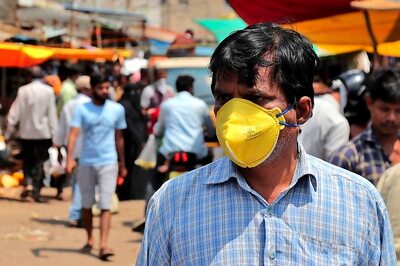
views
The global crude oil price hit an 11-year-low on Thursday. The crude is trading below $35 a barrel in the international market. The escalating tensions between the Sunni dominated Saudi Arabia and Shia dominated Iran – the two top oil producing nations in the World - is said to be the reason behind falling crude prices.
However India, one of the largest importers of crude oil, is saving billions of dollars due to falling prices of crude oil. India benefits by a fall in diesel and petrol prices, lower tyre prices, lower paint prices. Also there might be a significant 15% fall in air ticket prices in India.
Global oil prices have crashed 70 percent since mid-2014 as near record output from major producers like the Organization of the Petroleum Exporting Countries (OPEC), Russia and North America create a ballooning overhang that has left storage tanks around the world struggling to cope with the excess oil.
At the same time, demand is slowing, especially in Asia where the biggest economy and energy consumer, China, is seeing the slowest economic growth in a generation.
Traders said a dispute between Saudi Arabia and Iran, which might normally be seen as posing a risk to oil supplies, may actually be bearish as it all but eliminates cooperation over production between the two OPEC members.
Analysts said that the huge US storage overhang was the main reason for falling WTI crude. The huge storage overhang means that even if US production falls in 2016 as drillers succumb to low prices, it will take many months to work down excess supplies.
With the global economy looking shaky due to China's slowdown, traders said the outlook for oil remains for cheap prices for much 2016.
According to a research data by Morgan Stanley, here is an explaination of the Oil Economics for the common people in India.
Crude Declines: Who Gains Most?
Delhi: Petrol Pricing
- Consumers pay Rs 59.35/l
- OMCs charge Rs 22.46/l
- Dealers pay Rs 25.50/l
- Excise duty: Rs 19.37/l
- Dealer commission: Rs 2.25/l
- Value added taxes: Rs 11.87/l
Thus, 61% of what we pay on every litre of petrol goes to the companies, dealers, the Centre and the Delhi government.
Delhi: Diesel Pricing
- Consumers pay Rs 45.03/l
- OMCs charge Rs 18.69/l
- Dealers pay Rs 23.11/l
- Excise duty: Rs 13.83/l
- Dealer commission: Rs 1.43/l
- Value added taxes: Rs 6.66/l
58.4% of what Delhi consumers pay is actually what the companies, dealers, centre and the state make.
How Much Have We Saved?
- Peak oil bill (in 2012): $108 bn
- Current 12-month oil bill: $61 bn
- So net savings: $47 bn
Who Benefits From Lower Oil Prices
- Bulk of savings (60%)goes to the government
- Lower oil subsidy: $14 bn
- Higher excise duties: $14 bn
- Passed on to consumers: $8 bn
- Corporate sector : $11 bn
How We Benefit
- By fall in petrol prices
- By fall in diesel prices
- 15% fall in air ticket prices
- Lower tyre prices
- Lower paint prices




















Comments
0 comment